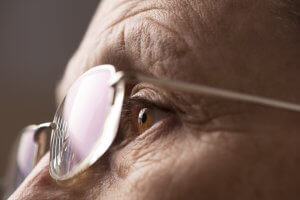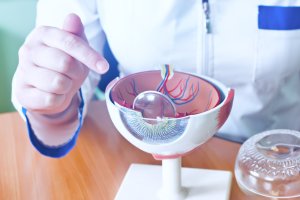What eye conditions are treated with oculoplastic cosmetic surgery?

Voted Best of Berks—
eight years in a row!

There are a wide variety of orbital and cosmetic eye lid conditions that can be treated with oculoplastic surgery, including:
Ptosis (Droopy Eyelids) – is a drooping of the eyelid that interferes with your vision due to muscle weakness and paralysis. It can be related to aging changes, but may also be congenital and seen in children.
Dermatochalasis – (Baggy Eyelids) is a term used to describe the presence of loose and redundant eyelid skin which is due to normal age-related loss of skin elasticity and weakening of the connective tissue of the eyelid, usually seen in elderly. Patients with dermatochalasis of the upper eyelids may report decreased peripheral vision from the interference of the drooping tissues classically known as lateral hooding. Genetic predisposition and familial inheritance are the strongest predisposing factors to dermatochalasis. Trauma can be associated with dermatochalasis.
Entropion (in-turning of the eyelid) – is a disorder in which the eyelid turns inward causing the eyelashes to rub against the cornea. It may be episodic at first, but tends to become constant with time. It causes pain and a foreign body sensation and leaves the eye red and teary. Untreated it can cause decompensation or infection of the cornea.
Ectropion (out-turning of the eyelid) – is caused by a loosening of the tendons supporting the lower eyelid. It causes the lower eyelid to gap away from the eye and turn outward, exposing the under surface of the eyelid. It produces a red tearing eye which can become infected.
Blepharospasm – is a bilateral condition causing spasm, blinking, and closure of the eyelids. The spasms mare mild at first but frequently progress in severity and frequency and can incapacitate an individual due to the inability to open the eyelids. After a medical evaluation the disorder can be treated with injections of Botox. Occasionally, surgery is necessary.
Dry Eyes – is a condition caused by lack of tears. In cases when drops and ocular lubricants have failed to control the symptoms, the tear drainage system can be closed with plugs or can be closed with cautery. This will increase the retention of the patient’s tears, which are the best lubricant of all.
Excessive Tearing – is caused when there is increased retention of tears and the eyelid does not have the capacity to hold them. The result is tear overflow down the cheek. Further, increased tears can cause significant difficulty reading, especially when looking through bifocals and occasionally can cause infection. The cause may include allergies, eyelid disorders, or an obstruction of the tear drainage system.
Find a Doctor
Physician information including education, training, practice location and more.
Schedule an Appointment
Call 800-762-7132 or make an appointment online.





